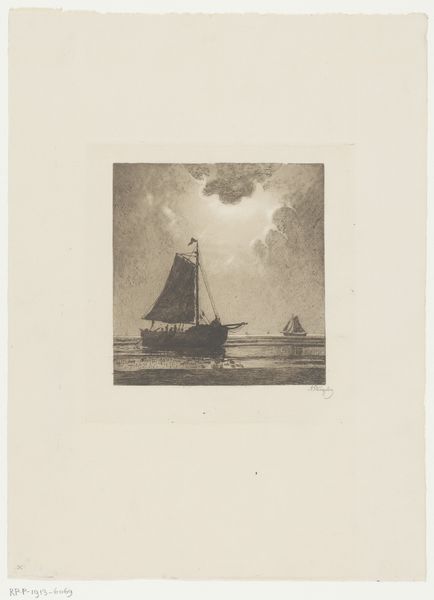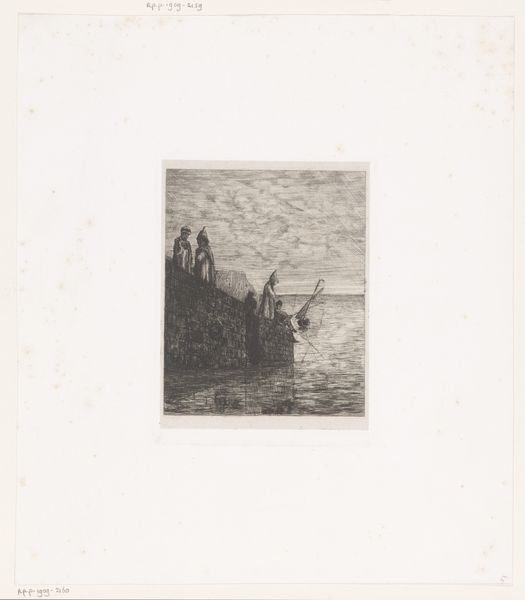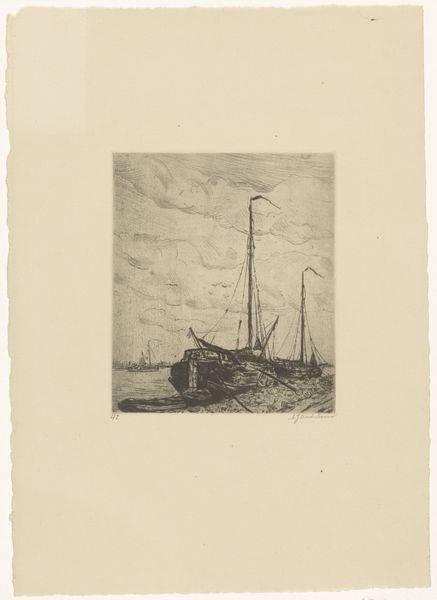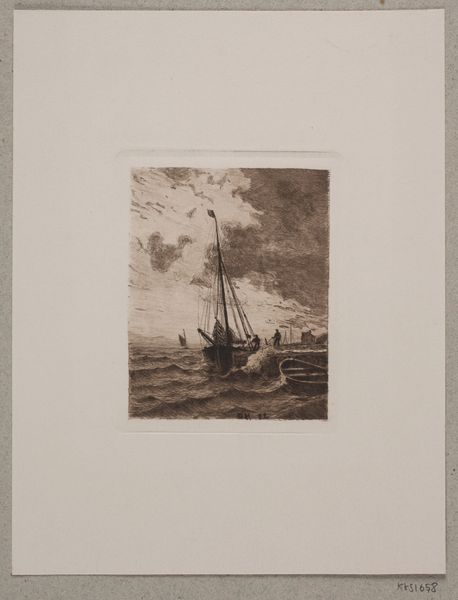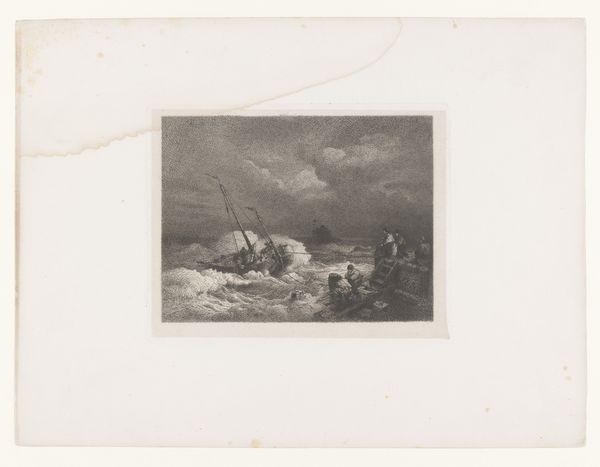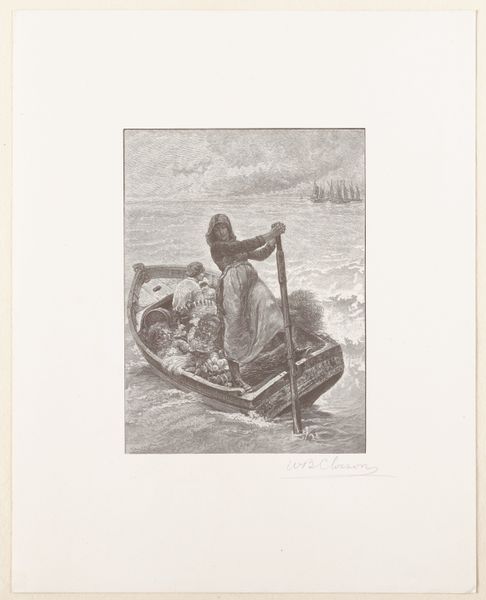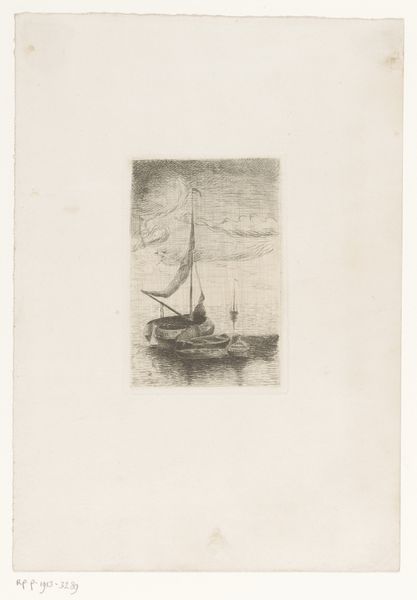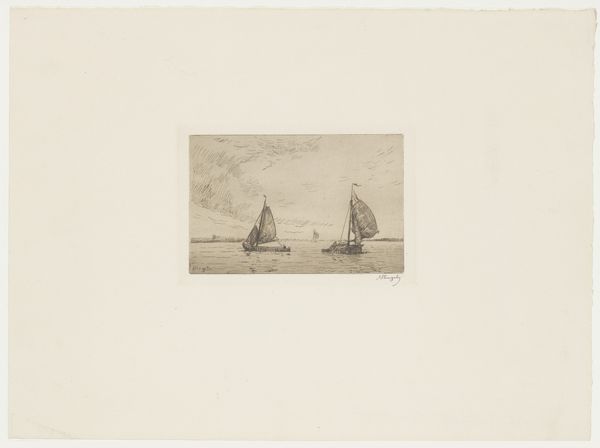
Roma vrouw met baby gezeten onder een tent kijkt naar een blaffende hond 1833 - 1879
0:00
0:00
drawing, paper, pencil
#
portrait
#
pencil drawn
#
drawing
#
light pencil work
#
mother
#
pencil sketch
#
dog
#
landscape
#
paper
#
pencil
#
genre-painting
Dimensions: height 235 mm, width 180 mm
Copyright: Rijks Museum: Open Domain
Curator: Let's spend a moment with Auguste Numans's pencil drawing, "Roma vrouw met baby gezeten onder een tent kijkt naar een blaffende hond," dating from the late 19th century. What’s your immediate impression? Editor: Sparse and bleak. The monochromatic palette certainly sets a somber tone, and the tent structure seems fragile, almost skeletal. Curator: Indeed. Numans gives us a glimpse into the lives of the Roma people. The setting is clearly on the periphery of settled society. The barking dog perhaps acts as a symbol of rejection and aggression from that outside world, a palpable hostility. Editor: I'm struck by the economy of line. There’s a fragility to the strokes, especially in the rendering of the landscape. Look at how the texture shifts just slightly between the woman's dark dress, the tent canvas, and the dog's lean figure. Curator: The gaze of the mother also speaks volumes. It's directed out toward the source of the barking, with what reads as both a guardedness, perhaps learned over generations of displacement, and an inner weariness. This could easily invite comparison to similar period representations. Editor: Consider how Numans guides our eye: the darkest shadows around the figures inside the tent, then gradually fading outward to almost nothing at the horizon line. The scene almost breathes as light hits each object. It is stark simplicity which drives the emotion. Curator: Precisely. The woman's embrace of her child becomes a symbol of resistance in itself, a primal protection against historical forces, and external challenges that permeate beyond a barking dog. Editor: It shows us so much with so little, doesn't it? Numans lets the careful arrangement of light do most of the narrative work. Curator: Ultimately, it raises important questions. Whose stories do we see in art and through whose eyes? It asks us to consider whose voices have historically been left unheard. Editor: I'm left contemplating the visual poetry that emerges from constraint and looking to similar composition techniques found across art of that era.
Comments
No comments
Be the first to comment and join the conversation on the ultimate creative platform.

